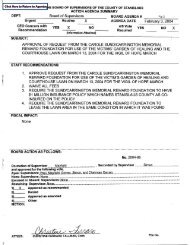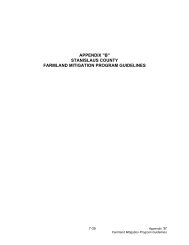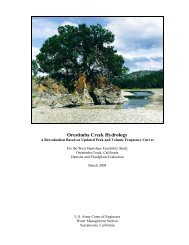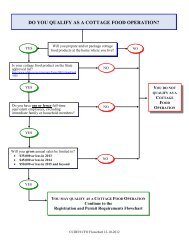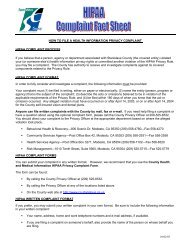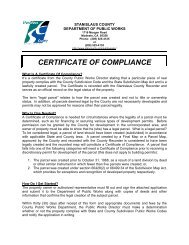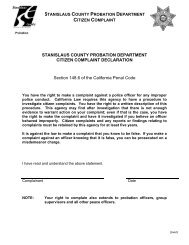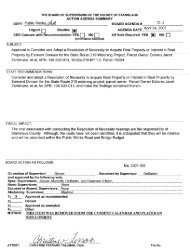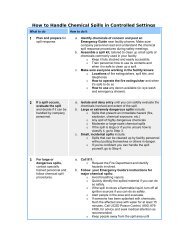Orestimba Creek Feasibility Study - Stanislaus County
Orestimba Creek Feasibility Study - Stanislaus County
Orestimba Creek Feasibility Study - Stanislaus County
Create successful ePaper yourself
Turn your PDF publications into a flip-book with our unique Google optimized e-Paper software.
Economics Appendix – Draft Report - <strong>Orestimba</strong> <strong>Creek</strong> <strong>Feasibility</strong> <strong>Study</strong>, <strong>Stanislaus</strong> <strong>County</strong>, California – September 2012<br />
6.1.4 Optimization of the Chevron Levee Height<br />
The chevron levee height was optimized by inserting incrementally higher levees into HEC-FDA<br />
and comparing the increased benefits to the estimated incremental costs. Costs were estimated<br />
by Cost Engineering for a levee equal to the mean 2% (1/50) annual chance WSEL and the mean<br />
0.5% (1/200) annual chance WSEL + 3ft. These two values were then used to create a linear<br />
interpolation between the two points in order to estimate the cost of incrementally higher levees.<br />
These costs include only those costs that are variable depending on the height of the levee<br />
(mostly fill material). The index point used for this incremental analysis was the Stuhr Rd. and<br />
CCID canal intersection, so the benefits here appear higher than those reported in the without<br />
project chapter of this report, but this is due to the rating curve and stage uncertainty as discussed<br />
above in section 5.5. The final benefits used for economic justification will be based on the<br />
without project conditions as summarized in Table 5-5. In addition, costs reported here do not<br />
reflect Total Project First Costs, instead these costs represent only those variable costs in relation<br />
to levee height. Total Project First Costs can be found in Table 7-1. This analysis is solely used<br />
for optimization of the levee height in order for costs and residual benefits to be determined in<br />
more detail on only one plan. As shown in Table 6-2 below, the optimal elevation for the top of<br />
levee at this index point is determined to be around 112.75 feet, which equates to a levee 5.5 to 8<br />
feet tall depending on the ground elevation changes along the levee alignment. It is noted here<br />
that this height is higher than the mean 0.2% (1/500) WSEL, but because of the alluvial fan type<br />
of flooding, the mean 0.2% (1/500) WSEL is only 9 inches higher than the mean 2% (1/50) mean<br />
WSEL.<br />
35




